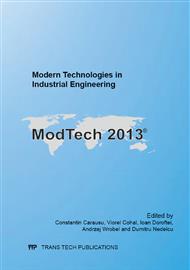p.745
p.751
p.757
p.763
p.769
p.775
p.780
p.786
p.792
Applying Determination Models for Human Errors in Sequential Analysis of Maritime Accidents
Abstract:
Human part in the socio-technical system in which they operate in order to achieve the object of work is essential. This system, because of the technological progress is characterized by a high level of technicality, continuing growth in complexity and danger. In this context, the human operator is required to make a substantial effort, which includes besides standard procedure and operations also emergency resolution calling for the ability to make judgments and assumptions based on the knowledge one holds.The main cause of the growing number of accidents has been attributed specifically to "human error". It is generally considered the fact that human factors contribute to accidents. But there are different opinions on the importance of this factor. Suggestions regarding the proportion of marine accidents caused by human errors vary from 50 to 90% of the total number of accidents. Some research considered that 60% of the total number is due to human error as a direct cause and the remaining of 30% human error is from indirect contributory cause. Effects of active cause are usually noticed almost immediately, while consequences of indirect cause may remain invisible in the system for a long time, until in combination with other factors compromise the system and lead to an accident.Different methodologies are developed, adopted from the investigations on risk analysis to performe the models that will determine the human errors in sequential analysis of maritime accidents.According to IMO resolution, human factors which contribute to marine casualties and incidents may be broadly defined as the acts or omissions, intentional or otherwise, which adversely affect the proper functioning of a particular system, or the successful performance of a particular task. Understanding human factors thus requires a study and analysis of the design of the equipment, the interaction of the human operator with the equipment, and the procedures followed by crew and management.Since human factors are triggered by human errors, which are the main source of risk in maritime activities, it seems important to develop different methodologies that allow a quantitative and qualitative analysis of the real incidence of several human factors over maritime accidents with the aim of taking human factors into account in properly developed risk management plans.
Info:
Periodical:
Pages:
780-785
Citation:
Online since:
November 2013
Authors:
Keywords:
Price:
Сopyright:
© 2014 Trans Tech Publications Ltd. All Rights Reserved
Share:
Citation:


